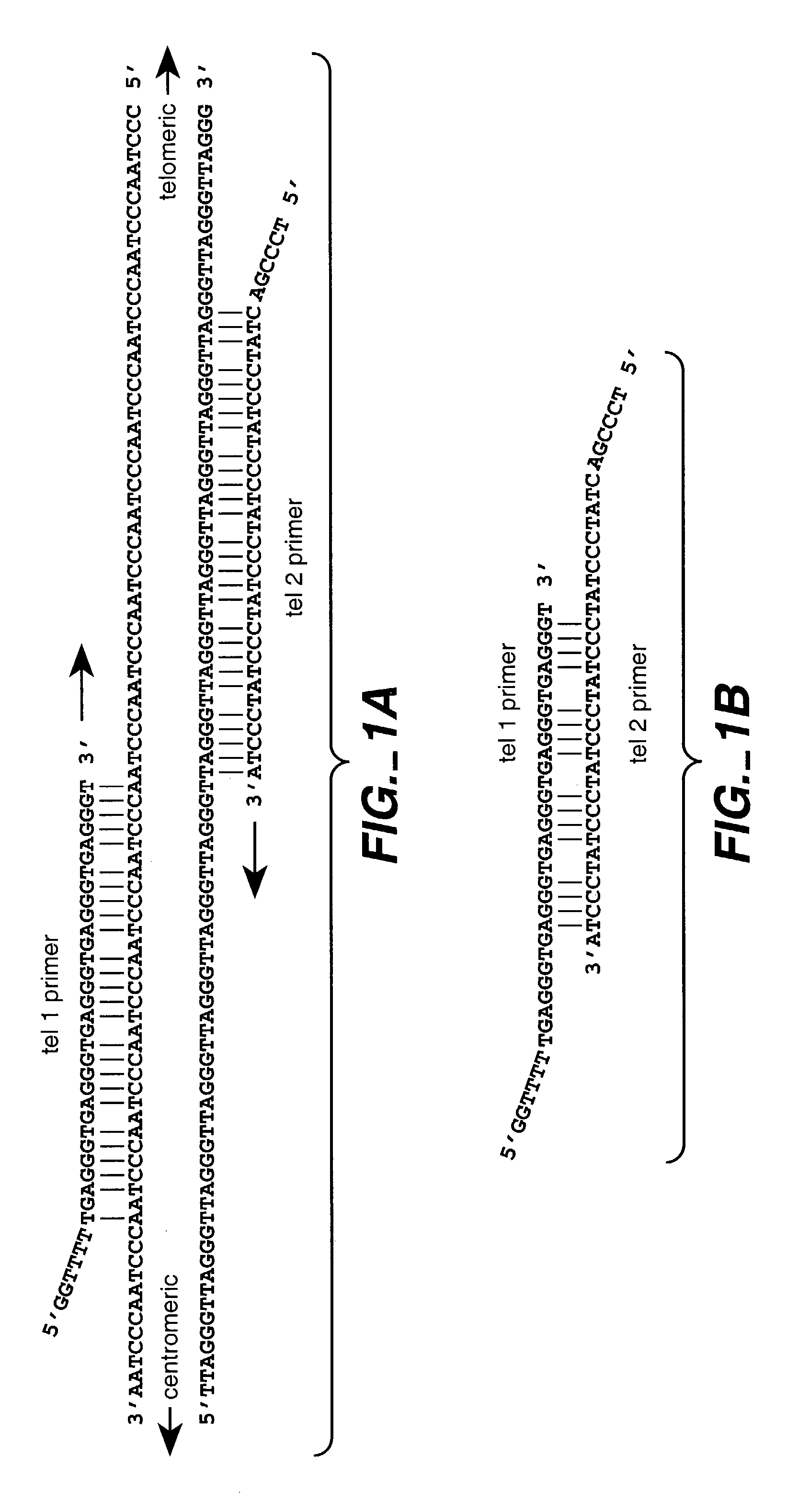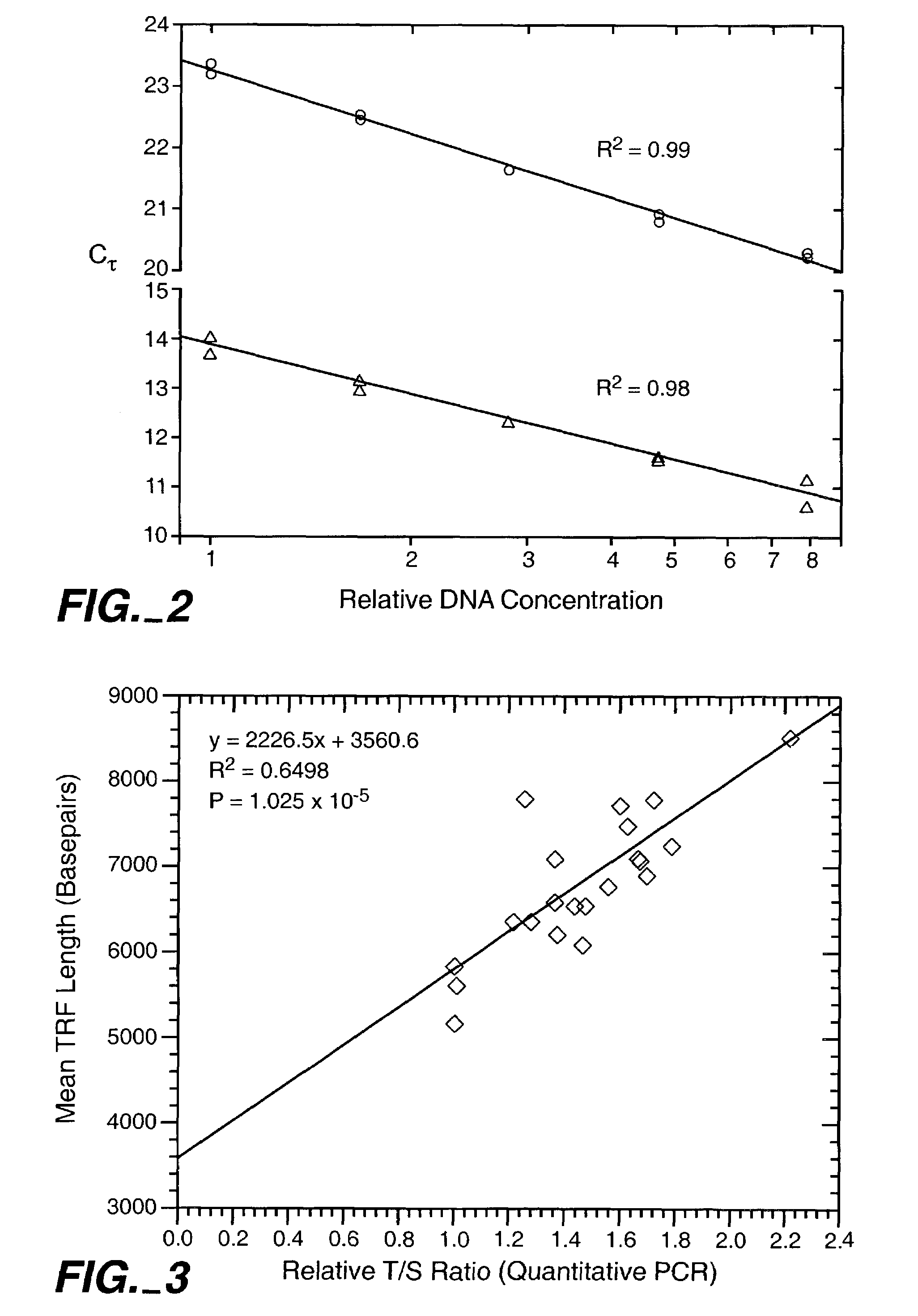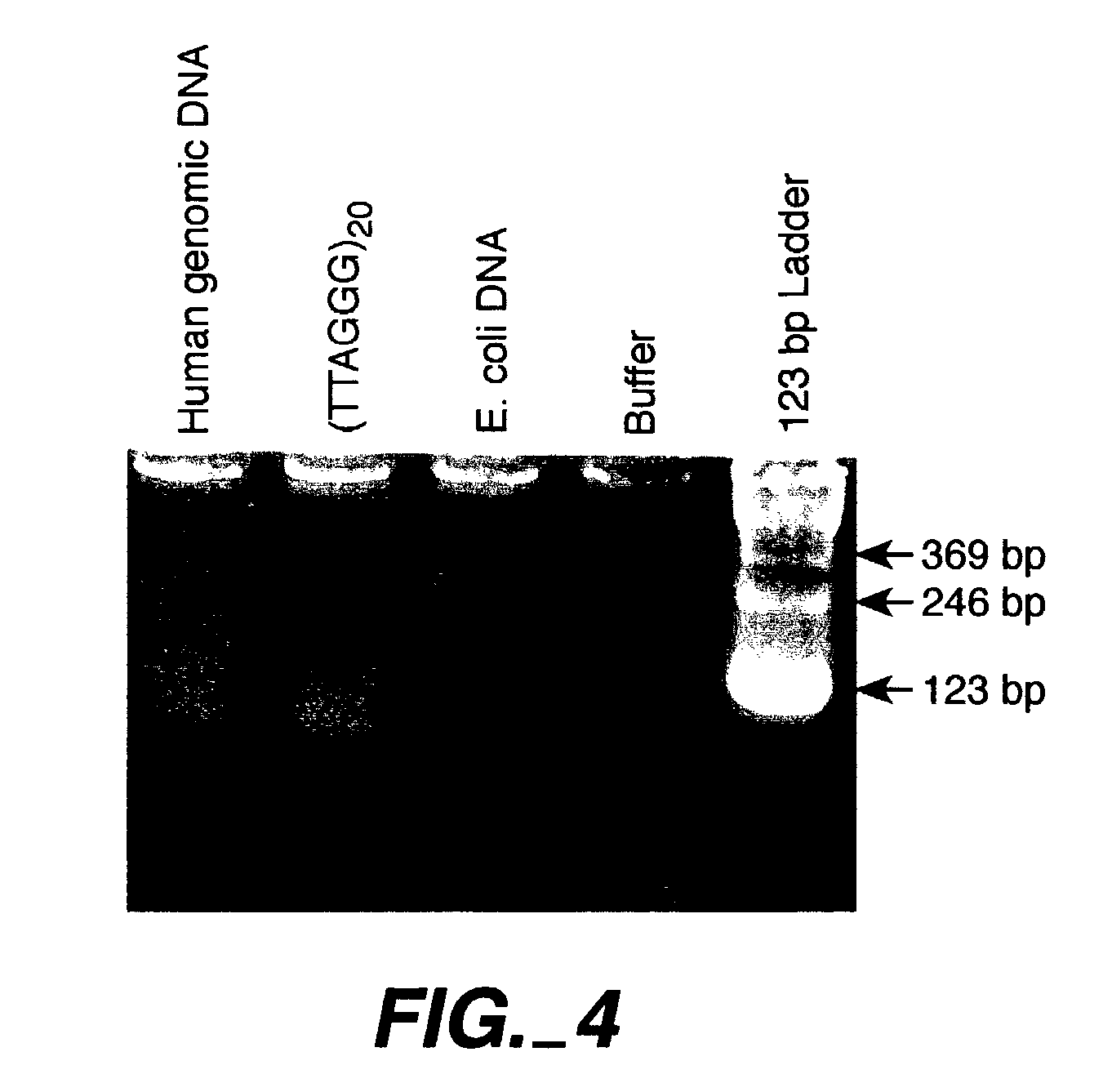Reducing non-target nucleic acid dependent amplifications: amplifying repetitive nucleic acid sequences
a nucleic acid sequence and non-target technology, applied in the field of recombinant dna technology, can solve the problems of reducing the sensitivity or even failure to amplify the intended target nucleic acid, limiting the choice of alternative primer designs, and affecting the amplitude of non-target nucleic acids
- Summary
- Abstract
- Description
- Claims
- Application Information
AI Technical Summary
Benefits of technology
Problems solved by technology
Method used
Image
Examples
example 1
Direct Amplification of Human Telomeric Repetitive Sequences
[0085]Genomic DNA was extracted from blood samples by standard procedures. The samples used to compare quantitative PCR vs. Southern blot approaches to telomere measurement were donated by 21 unrelated individuals (11 women and 10 men, age range 61-94 years) from Utah families that are part of the Centre pour les Etudes du Polymorphisme Humaine (CEPH) collection used worldwide for building the human genetic linkage map (White, R. et al., Nature 313: 101-105 (1985)). Purified DNA samples were diluted in 96-well microtiter source plates to approximately 1.75 ng / ul in 10 mM Tris-HCl, 0.1 mM EDTA, pH 7.5 (final volume 300 ul per well), heated to 95° C. for 5 minutes in a thermal cycler, quick-chilled by transfer to an ice-water bath for 5 minutes, centrifuged briefly at 700×g, sealed with adhesive aluminum foil, and stored at 4° C. until the time of assay.
[0086]Real time quantitative PCR on the extracted DNA samples are perform...
example 2
Determining the Relative Telomere Length
[0093]Mean telomere restriction fragment (TRF) lengths were determined as described by Slagboom et al., Am. J. Hum. Genet. 55: 876-882 (1994), hereby incorporated by reference. Approximately 0.5 ug of purified whole blood DNA was digested to completion with Hae III restriction enzyme. Digested samples were then mixed with DNA size standards, separated by electrophresis on agarose gels, and transferred to a nylon membrane. The membranes were hybridized with 32P end labeled oligonucleotide, (TTAGGG)7 (SEQ ID NO: 10), washed to remove non-specifically bound probe, exposed to a phosphor plate for 1 to 5 days, and the plates scanned with a PhosphorImager (Molecular Dynamics, Inc.). Blots were then stripped of the telomere probe, hybridized with radiolabeled probe for the DNA size standards, washed, exposed to a phosphor plate, and the plates scanned. The size standard images and telomere smear images were then superimposed to locate the positions o...
PUM
| Property | Measurement | Unit |
|---|---|---|
| Ratio | aaaaa | aaaaa |
Abstract
Description
Claims
Application Information
 Login to View More
Login to View More - R&D
- Intellectual Property
- Life Sciences
- Materials
- Tech Scout
- Unparalleled Data Quality
- Higher Quality Content
- 60% Fewer Hallucinations
Browse by: Latest US Patents, China's latest patents, Technical Efficacy Thesaurus, Application Domain, Technology Topic, Popular Technical Reports.
© 2025 PatSnap. All rights reserved.Legal|Privacy policy|Modern Slavery Act Transparency Statement|Sitemap|About US| Contact US: help@patsnap.com



